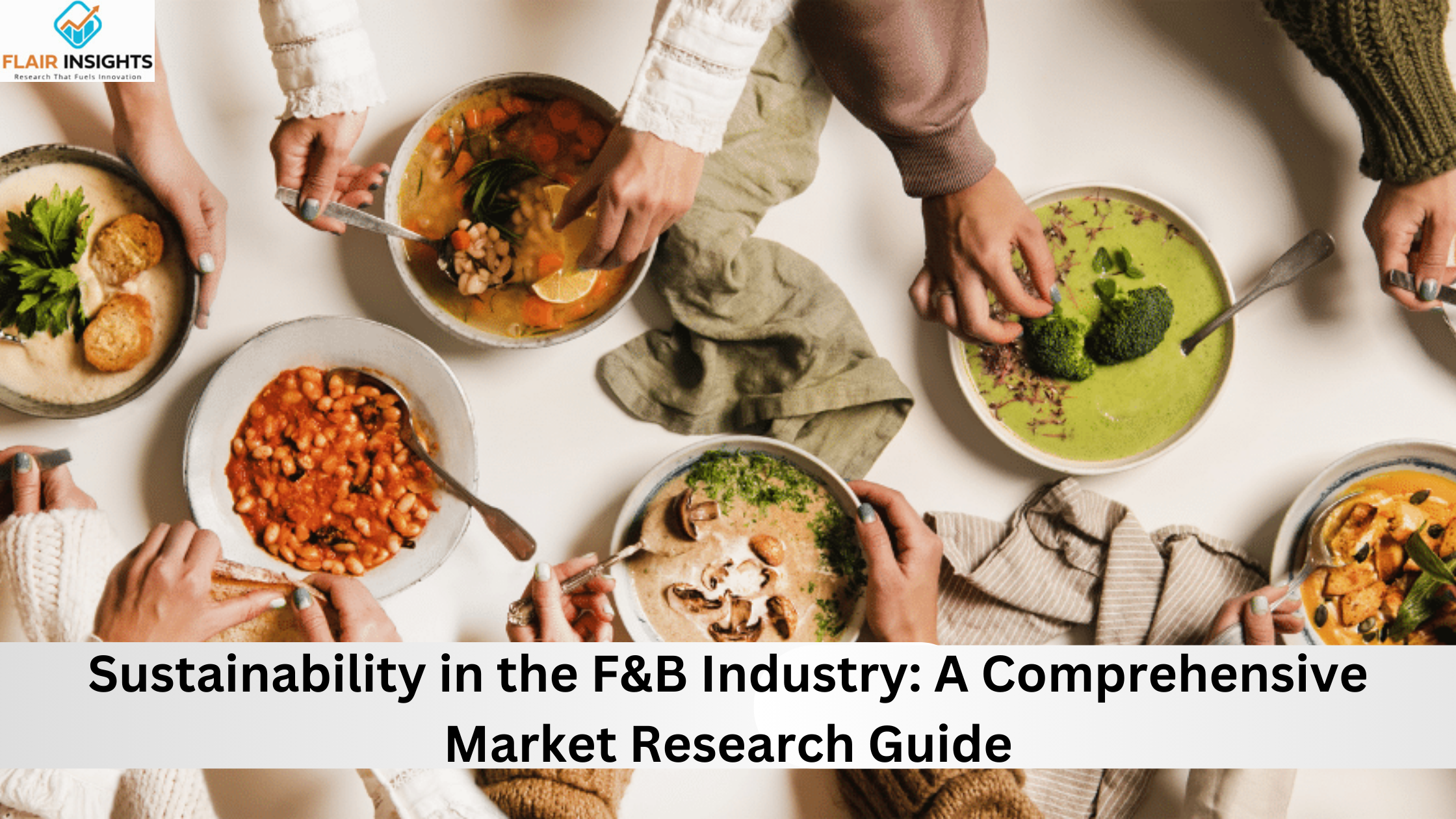
Inherent in the customer awareness of, and concerns for, the natural environment are strong forces that are making the F&B industry alter its processes dramatically toward sustainability. This comprehensive market research guide has been prepared in order to explore various dimensions of sustainability in the F&B sector, analyzing the trends therein and addressing the challenges to businesses in finding opportunities.
1. Introduction to Sustainability in the F&B Industry
The section gives an extensive background relating to the growing importance of sustainability within the F&B industry, including changing consumer behavior and increasing expectations from business to become more sustainable. Because of the growing sensitivity to the impact on the environment by consumers, changing expectations remake the F&B sector through calls for a critical look into initiatives and practices that pertain to the sustainable operation of the business in view of a changing market that is socially and environmentally sensitive.
2. Key Drivers of Sustainability in F&B
2.1 Consumer Awareness and Preferences
The paper explains how, with the rise in consumer environmental consciousness, their preferences are steering the F&B industry toward a trajectory of sustainable sourcing, production, and packaging. Due to enhanced consciousness toward the environment, the awareness has changed expectations forcing a relook at supply chains, methods of production, and modes of packaging. This trend simply had to be explored in more detail, with the need for the F&B sector to follow as closely as possible in a sustainable way that assures customer satisfaction and builds an eco-friendlier, socially more responsible industry.
2.2 Regulatory Landscape
This section also looks into the legislative environment concerning the F&B industry, ascertaining whether, indeed, there is an increased impulse from governments and international organizations to demand more stringent sustainability requirements. This chapter seeks to explore the dynamic space of changing landscapes, in which an environment with an active regulatory apparatus is pushing and mandating measures that force businesses in the Food and Beverage industry to conform to ever higher standards of sustainability. This regulatory scrutiny is but a reflection of the global commitment to the fostering of an attitude of environmental responsibility and of businesses aligned with practices that lead to a more sustainable, responsible, and resilient F&B sector.
3. Sustainable Sourcing in the F&B Industry
The criticalities of sourcing ingredients in a sustainable way and its deep impact on the total ecological footprint of food and beverages will be discussed in this section. In trying to understand the intricacies of ingredient sourcing, it is hoped that the discussion will underline the role played in deciding the F&B industry's ecological footprint as a whole. This becomes important for businesses that not only look to source products in a sustainable way but also to reduce their ecological footprint while answering the rising market demand for ethically and environmentally responsible products.
3.1 Local and Organic Sourcing
It discusses the increasing trend of local and organic sourcing in the food and beverage industry, detailing its multi dimensional impact. Bringing into view a triple win situation, it explains how, in fact, this kind of trend is reducing carbon emissions with the shortening of supply chains, boosting local economies through greater support for regional producers, and meeting consumer preferences for both healthier options and ethical sourcing. Another factor that enhances environmental sustainability is the rise of local and organic sourcing, adding to the total resilience and health-conscious appeal of the food and beverage market.
3.2 Fair Trade Practices
The discussion deepens about the fair trade practices in the F&B industry during the general view of how these initiatives actually contribute to social and economic sustainability in the supply chain. In general, the impact of the fair trade policies found the analysis to be in the contribution of the establishment of fair economic relationships, where there is support for its marginalized producers and general social welfare amplification. Fairtrade practices emerge as a mechanism for sustainable development that ensures a bit more ethical and inclusive approach in the F&B supply chain, hence positively benefiting the producers and consumers in return.
4. Eco-Friendly Packaging and Waste Reduction
4.1 Innovations in Packaging Materials
The work explains all the latest developments in the sphere of eco-friendly packaging materials and highlights ways in which companies are embracing sustainable means of packaging in an effort to reduce their carbon footprint. In this paper, we present a detailed description of new opportunities within the area of packaging, discussing how improvements have been oriented toward materials with reduced environmental impacts. By embracing these sustainable alternatives, businesses will be better placed to create an eco sensitive industry that answers a critical need for less waste and increased environmental concern regarding packaging in the F&B industry.
4.2 Waste Management Strategies
The analysis is concerned with effective strategies of waste management in the F&B industry, explaining how businesses consciously reduce food wastage, along with packaging, to ensure an improved sustainability ratio. This study discusses some of the new sustainability practices and best practices followed by companies in lieu of process streamlining, waste reduction, and efficiency in resources. By prioritizing waste reduction, businesses are working not only toward a more sustainable F&B landscape but also putting the brand as one aligned with the global imperative moving forward: tending to environmental concerns and encouraging responsible consumption down the supply chain.
5. Sustainable Practices in Food Production
5.1 Energy-Efficient Manufacturing
Attention is paid to how companies integrate low-carbon technologies into food production processes and the strategies they have in place for reducing their carbon footprint in manufacturing. Since this discourse covers the concerns of adopting sustainable technologies, it does provide an avenue for identifying new ways to increase operational effectiveness while at the same time reducing the negative impacts on the environment. In installing energy-efficient measures, the food and beverage industries do not simply cut back on their carbon emission but also play a very key role in the greater goal creating a much more sustainable and environmentally-friendly manufacturing environment.
5.2 Water Conservation in F&B
This paper discusses the critical role of water conservation in the F&B industry and how companies can sustainably put business practices into action that reduce water use during production. The discussion seeks to explore such initiatives that companies are taking towards actively fighting water poverty, reducing the impact on the environment, and supporting responsible water management. In the setting of the food and beverage industry, giving precedence to water conservation means not only enhancing operational sustainability but also supporting global efforts to ensure that this finite resource is used in a responsible manner.
6. Challenges and Barriers to Sustainability
The identification process, therefore, focuses on the challenges confronting the F&B industry to adopt sustainable practices. The paper proceeds with a focus on the triad of barriers consisting of economic, logistical, and cultural barriers to a smooth transition into more sustainable operations. The business of the F&B sector will be better able to handle such challenges when brought face-to-face with them. This helps in understanding the difficulties of integrating sustainability into business and in making informed decisions and strategic planning on how to surmount these barriers, thus opening up toward an environment-conscious and more resilient industry.
7. Market Opportunities and Competitive Advantage
The section explores how "sustainability" can change the F&B sector. It elaborates on the many opportunities for growth available in the market by discussing how businesses can use sustainability to their advantage in terms of competitive edge. From meeting evolving consumer demands to aligning with global imperatives on the environment, the strategic adoption of sustainability practices empowers companies not only toward being socially responsible but also through the doors of innovative solutions and amplified market reach that foster a pathway to enduring success in the dynamic F&B landscape.
8. Case Studies of Sustainable F&B Businesses
Success stories in the F&B industry are featured, with indepth explorations of companies that have successfully combined, often innovatively, sustainable practices into their operations. With these examples, the discussion not only points out the successes achieved by such businesses but also acts as a guideline for others in this particular industry. These case studies identify best practices, providing insight and hands-on lessons that may inspire and guide F&B companies to implement their initiatives toward long-term viability and positive environmental impact.
Conclusion
The final section of this guide looks to the future, highlighting some of the emerging trends and technologies that are set to transform sustainability in the sector. It gives business insight into the changing landscape to better prepare and plan for many of the challenges and opportunities of the future. Looking ahead at foreseen new developments keeps companies at the forefront, strategically positioning them to navigate the dynamic F&B sector with innovative foresight and ultimately contributing to a more sustainable and resilient industry in the years to come.
This is a comprehensive market research guide developed to equip industry stakeholders with an in-depth understanding of what sustainability in the F&B sector looks like today. It empowers stakeholders of businesses with knowledge at the core of decision-making processes in their journey toward a sustainable future. It is also a strategic asset for stakeholders and businesses to navigate, with awareness and foresight, through the many intricacies of the F&B industry while paving their way toward increased sustainability and resilience.
Trending Posts

Global Silver Nanoparticles Market
The global silver nanoparticles market was valued at $2.08 billion in 2020, and is projected to reach $4.1 billion by 2027, growing at a CAGR of ~17%

The Basic Pension Comes - Federal Cabinet Decides On the Pension Supplement
Financial security in old age is an issue that is causing stomach pains for more and more people in Germany. Low-wage earners fear the elderly. The ba

The Future of Artificial Intelligence
In recent years, the field of artificial intelligence (AI) has witnessed unprecedented growth and transformative advancements. As AI technologies
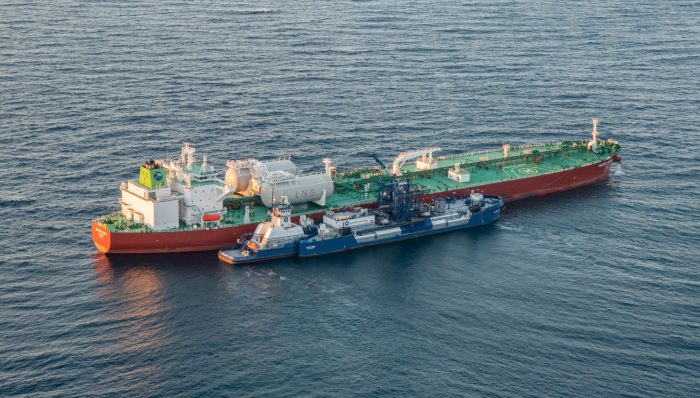
"LNG Bunkering" Here is something you must know!
In the current scenario of growing pollution, companies are trying to adapt more and more sustainable approach that not only gives eco-friendly result

Sailing into the future with Autonomous Ships
Autonomous Vehicles (AVs) are the uproar of this era. After airways, thanks to the companies like Tesla, that people are now getting used to see drive

Rising Demand For Uninterrupted Power Supply Is Expected To Drive The Power Rental Market
Todays world is totally reliant on electric power. There are many things which are not manageable without electricity. Power rental is a concept where

Rapidly growing IT industry coupled with the trend of bringing your own device (BYOD) is expected to provide new opportunities for growth of Cloud Collaboration
Cloud collaboration is the process of sharing and co-authoring the computer-based work through cloud technology

Fact check on UV Disinfection for COVID-19
Many regulatory authorities and bodies believe that UV disinfection technologies can play a role in a multiple barrier approach to reducing the transm

Vaccination: Vaccination Against Measles is Now Mandatory in Germany
The subject of compulsory vaccination has always heated peoples minds and caused emotionally charged discussions. The latest law in this area - the ob

The Global Ventilator Market Grows at a CAGR of 7.75 %
The Global Ventilator Market, which was at $688 million in the year 2016, is about to double by the year 2025, and reach a value of $1,347 million. Th
Recent Posts
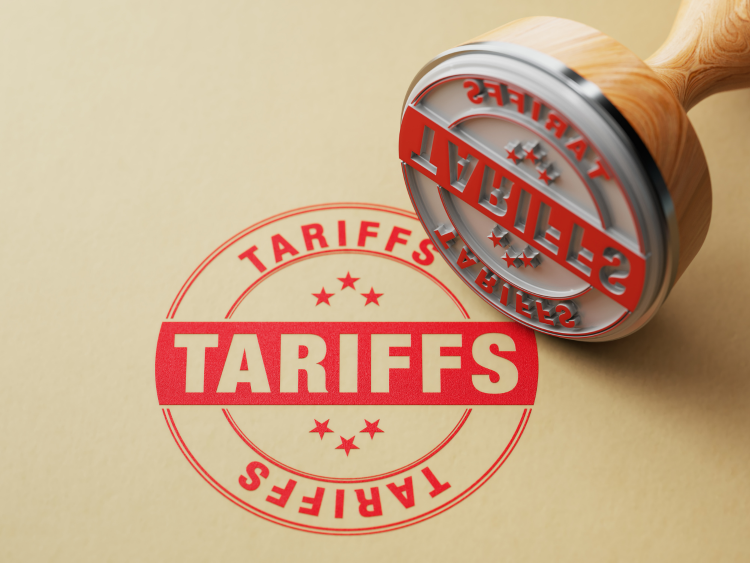
Tariffs & Trade: Key Trends, Policies, and Market Impact
A tariff is a tax imposed by a government on imported or exported goods. It is primarily used to regulate international trade by either encouraging domestic production or generating revenue for the government.

The Global Buy Now Pay Later (BNPL) Market: Growth and Opportunities
The global Buy Now Pay Later (BNPL) market has emerged as a revolutionary financial solution, transforming how consumers approach shopping and payments. Offering flexibility and convenience, BNPL allows consumers to make purchases and pay.

Global Motorhome Market: Growth and Forecast
The motorhome market has gained significant momentum over the past decade, driven by rising interest in outdoor tourism, evolving consumer lifestyles, and advancements in vehicle design and technology. As a preferred option for travelers seeking.

The Global Poppy Seed Market: Growth and Trends
Poppy seeds, derived from the opium poppy plant (Papaver somniferum), have been a vital component in global culinary, pharmaceutical, and personal care industries for centuries. The global poppy seed market is gaining traction due to its versatility.
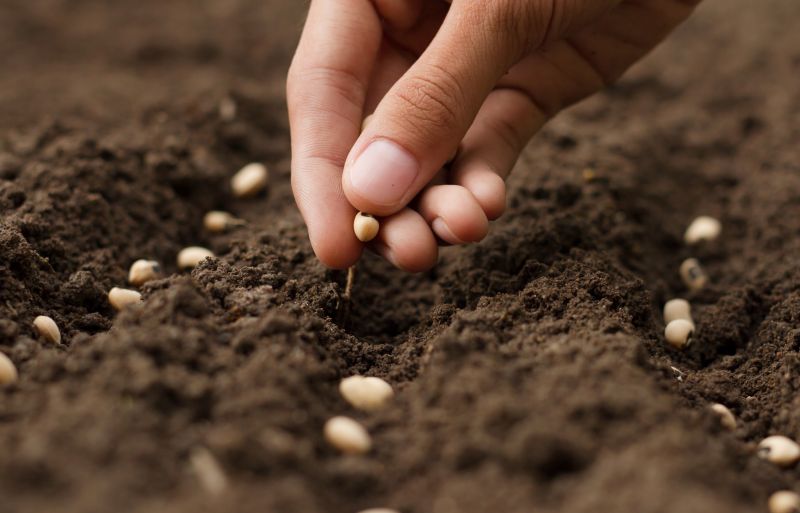
Global Plant Breeding and CRISPR Plants Market
The global food industry is facing immense pressure due to rising population levels, diminishing arable land, and the impact of climate change. Innovations in plant breeding, particularly the use of CRISPR technology, are reshaping the agricultural .
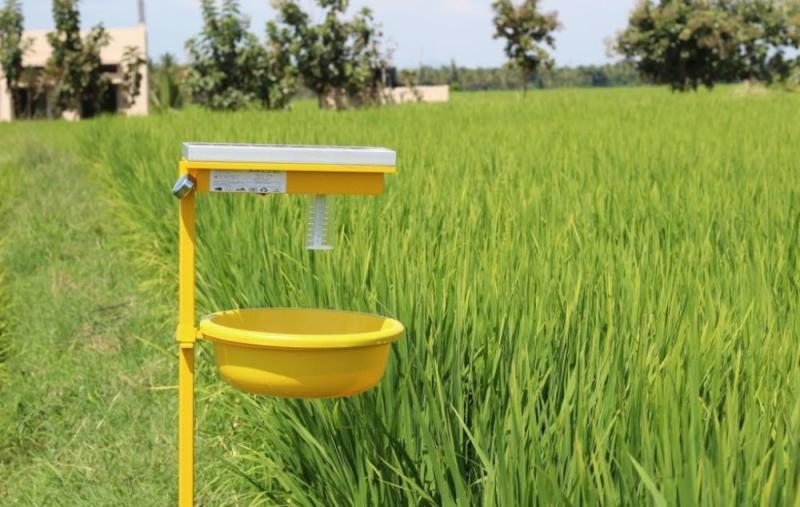
Global Pheromones Market – Trends, Opportunities, and Forecast
The global pheromones market has witnessed significant growth, primarily driven by the rising demand for eco-friendly pest control solutions in agriculture. Pheromones, natural chemicals emitted by insects and other organisms to communicate.

The Role of Technology in Oil and Gas Risk Management
In an industry as dynamic and complex as oil and gas, risk management is crucial for ensuring operational efficiency, regulatory compliance, and safety. Risk management software has become an indispensable tool for companies in this sector.

Global Smart Grid Sensors Market
The global energy landscape is undergoing a significant transformation, with smart grid technologies at the forefront. Smart grid sensors, a critical component of modern energy grids, enable efficient monitoring, energy distribution.

Global Photovoltaic Glass Market Research Report
The global photovoltaic (PV) glass market is experiencing unprecedented growth, driven by the accelerating shift towards renewable energy and the integration of sustainable materials in construction. This report delves into the market’s key growth.

Exploring the Growth of the Global Micro Solar Inverter Market
The Global Micro Solar Inverter Market is forecasted to expand significantly, growing from an estimated value of USD 4.8 billion in 2024 to USD 14.6 billion by 2030, with a CAGR of 24.2%. This growth reflects increased adoption of solar energy system
.png)